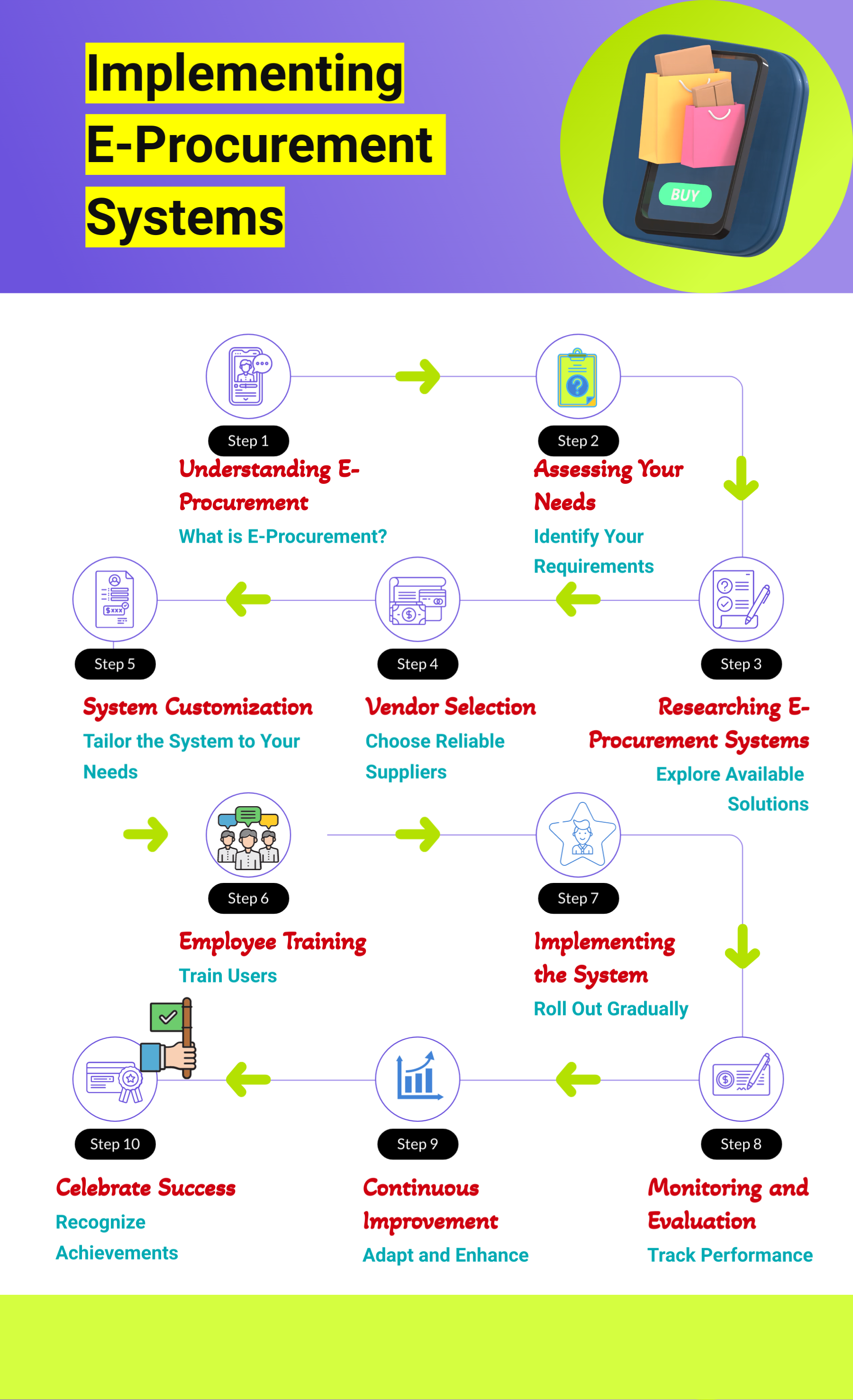Step 1: Understanding E-Procurement
What is E-Procurement?E-Procurement is the electronic management of the procurement process, involving the purchase of goods and services using digital technology. It replaces traditional, paper-based methods with online platforms, making the entire process faster, more accurate, and cost-effective.
Example:
Imagine your school needing new computers. Instead of manually filling out paper forms, the school can use an E-Procurement system to browse suppliers online, compare prices, and place orders electronically.
Step 2: Assessing Your Needs
Identify Your Requirements:
Start by listing the goods and services your organization needs. This could include everything from office supplies to specialized equipment.
Example:
Your school might need new textbooks, sports equipment, or even maintenance services for the building.
Step 3: Researching E-Procurement Systems
Explore Available Solutions:
Research different E-Procurement systems in the market. Consider factors like user-friendliness, features, and costs.
Example:
Think of it like choosing a new app for your smartphone. You'd look at reviews, compare features, and select the one that best fits your needs.
Step 4: Vendor Selection
Choose Reliable Suppliers:
Identify and select suppliers that offer the goods and services you need. Ensure they are reliable, provide quality products, and have a good track record.
Example:
For your school supplies, you might choose vendors who specialize in educational materials and have positive reviews from other schools.
Step 5: System Customization
Tailor the System to Your Needs:
Work with the E-Procurement provider to customize the system based on your organization's specific requirements.
Example:
Customizing is like personalizing your school backpack with the compartments you need for books, pens, and other items.
Step 6: Employee Training
Train Users:
Ensure that everyone who will be using the E-Procurement system understands how it works. Training sessions or tutorials can help users feel comfortable navigating the platform.
Example:
Think of it like learning a new game. You might not know all the rules at first, but with practice, you become a pro.
Step 7: Implementing the System
Roll Out Gradually:
Introduce the E-Procurement system gradually to avoid overwhelming users. Start with a small department or a pilot project before implementing it across the entire organization.
Example:
It's like introducing a new subject in school. You might start with one chapter to get used to it before covering the entire syllabus.
Step 8: Monitoring and Evaluation
Track Performance:
Regularly monitor how the E-Procurement system is performing. Collect feedback from users and evaluate if it's meeting your organization's goals.
Example:
Just like checking your grades, you'd want to see how well the E-Procurement system is helping your school get the supplies it needs efficiently.
Step 9: Continuous Improvement
Adapt and Enhance:
Based on feedback and performance data, make continuous improvements to the system. This ensures that it stays effective and meets the evolving needs of your organization.
Example:
Think of it as updating your favorite app. Developers release new versions with improved features, making the app better over time.
Step 10: Celebrate Success
Recognize Achievements:
Celebrate the successful implementation of the E-Procurement system. Acknowledge the efforts of those involved and highlight the positive impact on the organization.
Example:
Just like celebrating the end of the school year, you could have a small event or acknowledgment to appreciate everyone who contributed to the success of the new system.



